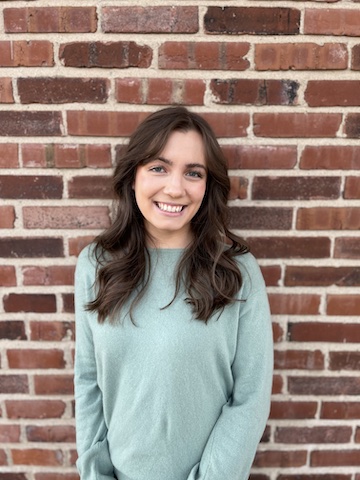.jpg)
Push In vs Pull Out – AAC Therapy
November 14, 2022
AAC therapy, at its core, is language therapy. But, many students and clients with complex communication needs require a more adaptive approach to their individualized language therapy than other students.
Push in therapy describes services being delivered within a student’s contained classroom, targeting language goals alongside their everyday lessons.
Pull out therapy describes what most think of when discussing speech therapy – removing a student to a secondary location for 1:1 or small group language therapy.
For students with AAC devices – which model is most beneficial?
The answer, of course, depends! When children first acquire their AAC device, it can be overwhelming. They are learning a brand-new way to interact with their world, basically a brand-new language. Conducting those first early sessions with a device without deviating from their routine by taking them to a private therapy office can help them integrate their new communication system into their own world. Establishing baseline functional communication skills in a student’s everyday life can also aid in quicker generalization and carryover of the targeted skills.
Outside of the numerous direct benefits for students, push in therapy also serves to support our teachers. Teachers, as we well know, are often arriving early, staying late, and putting large amounts of energy into their students’ well-being. While our SPED teachers are likely familiar with AAC as a general concept, they may be less familiar with the inner workings and specifications of each individual program. In a perfect world, we would be able to set aside the multiple hours it takes to teach each teacher how to find words in their student’s devices, how to integrate AAC into their lessons, and how to troubleshoot device mishaps. In reality, there is rarely time for that level of in-depth colleague education for each student, each device, and each software.
Push in therapy can allow SLPs to support teachers, in real-time, with their students who use AAC. We can help troubleshoot the placement of a charging device in a classroom to improve access, we can show how to model the device during instruction, and we can help provide individualized attention to their students. Of course, the amount of push in therapy that is helpful for the teacher versus distracting to the rest of the class is at the discretion of each individual educator. Keeping an open line of communication is integral to push in therapy success.
Once essential functional communication skills, as well as a secure relationship between the student and SLP, are both established pull out therapy can help teach sophisticated language skills in a private setting. Pull out therapy can also be beneficial to students who can become overstimulated in their classroom with multiple adults or peers talking at once. It is also the area wherein SLPs have the most control over the environment and the stimuli, which can help focus sessions in a productive manner.
In summary, when deciding whether to conduct push in or pull out AAC therapy, consider the following factors in order:
-
What are the baseline language abilities of the student?
-
Does the student have a completed sensory profile? If so – what sensory considerations need to be made when deciding the optimal location for therapy?
-
What are the classroom conditions like? How many students? How many aids? How close is the student’s desk to an outlet to charge the device, if necessary?
I strongly encourage you to check out the “references and for further reading” section of this article – particularly the article by Leatherman and Wegner! Leave a comment below when you find your favorite.
For more in this AAC Assessment series be sure to read:
AAC Assessment in Schools – A Team Approach
References & For Further Reading
Cirrin, F. M., Schooling, T. L, Nelson, N. W., Diehl, S. F., Flynn, P.F., Staskowski, M., Torrey, T. Z, Adamcyzk, D. F. (2010). Evidence-based systematic review: Effects of different service delivery models on communication outcomes for elementary school–age children. Language, Speech, and Hearing Services in Schools, 41, 233-264. doi:10.1044/0161-1461(2009/08-0128)
Dixon, D. (2013). Signatures: Push-in services: Making the ‘impossible’ possible. The ASHA Leader, 18(8), 56–57. https://doi.org/10.1044/leader.sign.18082013.56
Leatherman, E. M., & Wegner, J. R. (2022). Augmentative and alternative communication in the classroom: Teacher practices and experiences. Language, Speech, and Hearing Services in Schools, 53(3), 874–893. https://doi.org/10.1044/2022_lshss-21-00125
Nippold, M. (2010). Back to school: Why the speech-language pathologist belongs in the classroom. Language, Speech, and Hearing Services in Schools, 41, 377-378. doi:10.1044/0161-1461(2010/ed-04)
Throneburg, R., Calvert, L., Sturm, J., Paramboukas, A., & Paul, P. (2000). A comparison of service delivery models: Effects on curricular vocabulary skills in the school setting. American Journal of Speech-Language Pathology, 9, 10–20.
Wadle, S. L. (1991). Why speech-language clinicians should be in the classroom. Language, Speech, and Hearing Services in Schools, 22, 277. doi:10.1044/0161-1461.2204.277
About the Author

Marisa Julius is a speech-language pathologist that has worked in both public and private school settings with a focus in pediatric augmentative and alternative communication therapy. She currently works for a private specialized school setting with children 5-21 with complex communication needs and a variety of disorders including Autism Spectrum Disorder, Down Syndrome, Childhood Apraxia of Speech, Language Delays, Reactive Attachment Disorder, and more. She is a Missouri native and earned two Bachelor degrees from Truman State University in Communication Disorders and German Studies. She received her M.A. in Communication Sciences and Disorders from Saint Louis University. She considers herself a lifelong learner, and is thrilled to be writing for SLP Toolkit, if only for an additional excuse to read more. In her free time, you can find her cooking, reading, hiking, or showing everyone unsolicited pictures of her dog.



